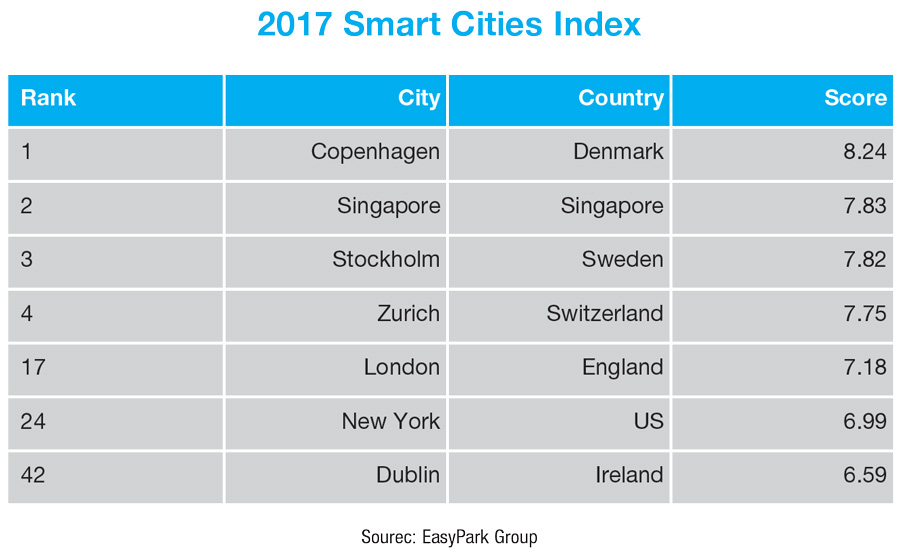Smart city: Smart economy


The development of the smart city can provide both societal and economic benefits. eolas explores the evolution of the smart city and the vast potential full integration can unlock.
Although there is no firm definition of a smart city, there exists a common understanding that a smart city is one which is integrating the evolution of new digital technologies and infrastructures to mitigate against urbanisation and manage population growth through greater efficiencies.
Sustainable growth with information and communication technology at its core is the overarching ambition of a smart city. While citizen convenience and enhanced citizen experience – less traffic, quicker public transport, better air quality etc – is a big part of the smart city, so too is its economic capability.
Governments, local authorities and big businesses are pushing ahead with smarter city delivery because they recognise the potential economic growth it can provide. As well as improving living standards, smart city innovation has the potential to dramatic alter travel patterns, the way of working and service delivery. Every element of improvement increases a city’s competitiveness, a key factor in an increasingly global market.
At the core of a smart city is the centralised, real-time control of services, examples of which include transport and emergency service management, digital public transport displays and connectivity, GPS-driven parking availability, smart grid energy deployment and environmental initiatives such as smart bins. The four key areas of focus could be defined as society; economy; environment and governance.
In Ireland, the pace of smart city delivery has been much slower when compared to those cities leading the way in smart technology delivery. The 2017 Smart Cities Index, which analyses and scores various aspects of transport and mobility; sustainability; governance; innovation economy, digitisation and living standard, only ranked one Irish city, Dublin, in its top 100. Dublin placed 42nd in the table, well behind the leading cities of Copenhagen, Singapore and Stockholm (see right).
Despite this, a drive towards smart cities is accelerating across Ireland in recent years. Not just in Dublin, but the second-tier cities of Cork, Waterford, Galway and Limerick have all recently rolled out projects aimed at working towards EU targets relating to growth outlined in the 2020 Strategy.
Leading example: Copenhagen
Copenhagen is constantly listed as amongst the top smart cities in the world. In May 2012, Copenhagen pledged to become the world’s first carbon-neutral capital by 2025. The Copenhagen Solutions Lab, the city’s incubator for smart city projects and initiatives which works alongside the city, companies and citizens in order to test out new technologies and ideas in real-life settings, is the driving force for its smart transformation. The lab’s largest project has been Connecting Copenhagen, the collection of real-time data from access points mounted in streetlights to track devices in cell phones, wearables, bikes, buses and cars. The data is then analysed to utilise in an intelligent traffic-management system. The data-network infrastructure connects parking systems, traffic lights, municipal buildings, smart metering systems and charging stations for electronic vehicles. It allows for optimal energy use in municipal buildings and street-lighting systems according to weather conditions, traffic movement and fuel prices. Connecting Copenhagen also plans to install sensors in garbage cans and sewers to optimise city services like rubbish removal, water sanitation and waste management.
Some of the projects which are being rolled out or are already active include:
Dublin
• Already operational, the delivery of real time passenger information (RTPI) has transformed Dublin’s transport system and has allowed for the real-time data feed to signage and to smart phones.
• The Dublin Docklands District, consisting of some 40,000 people at work and 26,000 residents has been recognised as a Smart City Technology testbed. Smart Docklands unites SME’s, residents and local government officials with technology companies to solve challenges and improve the area through smart innovation.
Cork
• Launched in December 2017, The Cork Dashboard is part of the SFI-funded Building City Dashboards Project based in Maynooth University. The project builds webpages for use by citizens, businesses and local authorities to access real-time and historic information about their city and region such as traffic, travel, weather, services, housing, education, health and employment.
• Cork city parking provides real-time car park space information around the city. The project aims to be platform for highlighting how greater travel efficiency projects can contribute to wider societal and economic benefits.
Limerick
• Outlined in their Limerick 2030 plan, the city has ambitions to create a Municipal Data Network to enable more real-time data to be collected using IoT technologies with “over 100 air, noise, water and soil quality sensors. While footfall counters and Smart CCTV will enable safer communities and new datasets that will be used to foster innovation and support our start-up ecosystem in the Georgian Innovation District.”
Galway
• The Galway Smart City: Light Pollution, Air Quality and Noise Monitoring Smart System, an IoT Based project led by the Insight Centre for Data Analytics, based at at NUI Galway, focuses on the design of external monitoring for air quality, incidence of light pollution, glare and spillage into the surrounding environment and noise levels giving due regard to the commercial and residential amenities of surrounding areas.
Challenges
Despite the many opportunities presented by making cities smarter, as with most increased digitisation security concerns exist.
As pointed out by Rob Kitchen of the Programmable City project at Maynooth University in his report ‘Getting Smarter about smart cities: Improving data privacy and data security’: “Never before has so much information about people – their characteristics, their location and movements, and their activities – been generated. These data can be put to many good uses, but they also raise a number of issues with respect to data privacy, data protection, and data security.”






